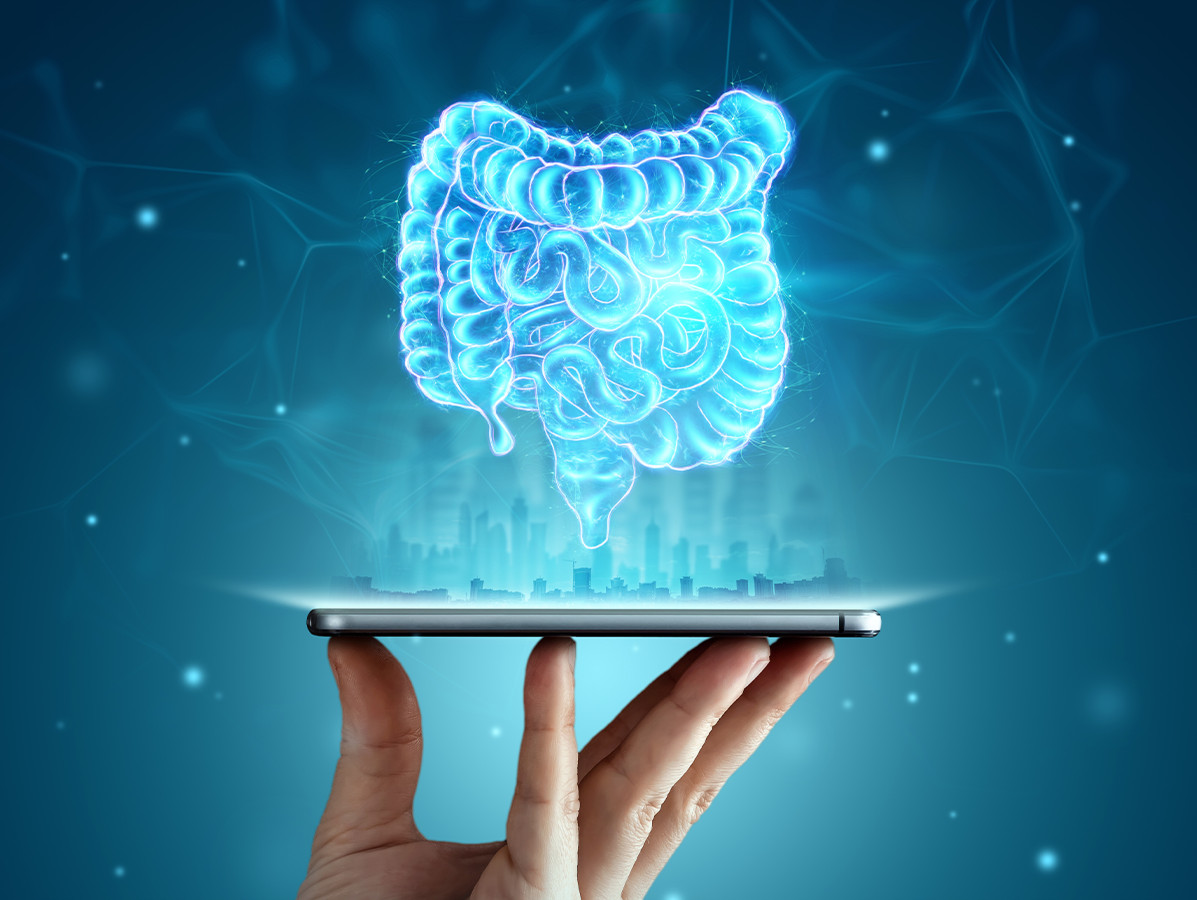
It cannot have escaped anyone's attention: proteins are, without exaggeration, the centre of attention. No wonder: the world population is growing, in many places prosperity is increasing, which goes hand in hand with increased meat consumption, and the planet is too small to meet the demand for animal protein sources (meat, dairy). So we need to move towards more sustainably produced proteins to meet the protein needs of all those people.
We are increasingly making 'meat substitutes' from sustainable proteins based on plant proteins. The proteins in these products are structured by means of extrusion; this is necessary in order to imitate the 'bite' of meat as closely as possible. The question arises as to whether such structured proteins are easy to digest and provide us with the necessary amino acids? Is it comparable to the original meat products? Are dietary recommendations based on a diet of animal products still adequate?
Many meat substitutes on the market today are made from soya protein, or mixtures of soya and proteins from cereals or peas, lentils and/or other legumes. Or derived from fungi grown in a large reactor, such as Quorn made from the fungus Fusarium venenatum. It is to be expected that in the future, many more sources of protein will be tapped (such as protein from beet leaves or water lentils, or from grains and yeast left over from brewing, or other fungi and bacteria), because in many places, people are working hard to make that a reality. That's a good thing, because variation in protein sources is a very good way of making sure that our amino acid needs are met, especially the essential amino acids: the eight amino acids that our bodies cannot make themselves and that we have to get from our diet. That said, these essential amino acids not only need to be present in the right balance in our dietary proteins, but they also need to be released from them by our digestive system so that they can be absorbed by our intestines. Protein quality is therefore not only determined by the content of essential amino acids, but also by the digestibility of these proteins.
Science can assign a numerical value to protein quality, the combination of the content of essential amino acids and digestibility. This makes it possible to compare various protein sources and products on their nutritional merits. And also, on the basis of such comparisons, to develop protein mixtures and use them in products that are - from a nutritional perspective - attractive. To determine such numerical values, the so-called PDCAAS (meaning: protein digestibility corrected amino acid score) and more recently (since 2013) the DIAAS (digestible indispensable amino acid score) have been developed. The PDCAAS is determined by dividing the content of an essential amino acid in the test protein (for a certain consumer category, e.g. children) by the content of the same amino acid in a control protein (this produces the amino acid score, AAS). The protein is then given to a test animal (often a rat, preferably a pig, because it has a more human-like digestive system) and it is determined in the faeces how much of the administered quantity can still be found there. The difference is considered to be digested and absorbed. This gives a number for the digestibility. Multiplying the AAS and digestibility gives a value for the PDCAAS (1). There are a number of disadvantages to the PDCAAS. One of them is that the microbiota also eat the proteins and will break them down and consume them, which can overestimate the digestibility.
That is why nowadays we prefer to use the DIAAS (2): a protein is again given to a test animal. The digestibility is determined by taking a sample at the transition of the small intestine to the large intestine (i.e. before the bacteria in the large intestine start to process it). An advantage of the DIAAS is that a protein can be given a score of >100% if, for a limiting essential amino acid, it performs better than the control protein. The maximum obtainable PDCAAS is set at 1.0, because it was thought that a higher-than-necessary level of essential amino acids would not be absorbed anyway and could therefore be ignored. Another advantage of DIAAS is that it gives a 'clearer' picture of the intestines' own capacity to digest and absorb proteins. After all, sampling takes place before the microbiota can get involved.
All well and good; the DIAAS is not ideal either: a test animal is not a human being and may have different amino acid requirements; no account is usually taken of the fact that food was heated before consumption (which is very common, and may influence digestibility) and little or no account is taken of the food matrix. Especially for a largely plant-based diet, the DIAAS would fall short of the PDCAAS (3).

Another important and growing objection to both PDCAAS and DIAAS is that these measurement methods are based on animal testing. There is increasing social resistance to the use of animals, especially when it comes to satisfying and/or optimising what is often seen as a 'welfare' thing. Especially in the Western world, where people tend to eat (far) too much, the average intake of protein is 1.7 times the recommended amount and amino acid deficiencies occur almost exclusively among the elderly and sick.
There is also an important technical objection: the protein quality is determined in a (often fast - faster than a human - growing) laboratory animal. By definition, this is not a human being, which means that caution is required when translating the measurements to humans.
Experimenting in the ideal 'test animal', man himself, is possible but expensive. Certainly when several products have to be analysed, for example to determine the optimum matrix composition. Digestibility research in humans has the advantage that personal variation in digestibility can also be examined. Some individuals may have more difficulty digesting certain protein sources, or using a particular food matrix. Based on such data, the protein intake recommendations may need to be slightly adjusted and specified.
Artificial', in vitro, mimics of the digestive system have existed for some time. These have also been discussed previously in Voedingsindustrie (September 2020, 'What are they worth, those new proteins'). They range from relatively simple measuring systems like the so-called INFOGEST consensus model (4), to more fancy systems like the TIM or the SHIME model. For some time now, we at WFBR have been trying to adapt such in vitro systems so that they can be used to make predictions for the DIAAS score of proteins, for example. This will make cheaper, and above all, more animal-friendly methods of measuring protein quality available. Of course it is important that such an in vitro determined DIAAS (IVDIAAS) comes as close as possible to the real nutritional value of a protein. That is not necessarily the DIAAS. After all, the animal is not an ideal model either.
Meanwhile, for eight protein preparations from vegetable or animal sources such an IVDIAAS value has been determined. These showed a reasonably coherent ratio with DIAAS values determined in animal models; at least as far as known from the literature. It should be noted, however, that there is considerable variation in these literature values. Nevertheless, we still have some way to go: for example, the IVDIAAS model is based on the INFOGEST model. This does not, for example, include a translation for gastric emptying (which is important for the kinetics of protein digestion). We are currently working on incorporating so-called 'brush border enzymes' into the model. These are protein-splitting enzymes that are found in our intestinal epithelium. They too contribute to protein digestion, after stomach and intestinal enzymes have done their work.
Expressing the nutritional value of proteins in terms of a numerical value is an obvious thing to do on the surface, but in practice it is difficult - and so far expensive - to do.
It always involves the use of models; either animal or in vitro. This is because the ideal model, the human being, is often too expensive and the research is sometimes unethical. Models are by definition distortions of reality, which we must take into account when interpreting measurement data. With in vivo models, due to the ethical and financial constraints mentioned earlier, it is not possible to measure a very large number of samples, and therefore it is more difficult to get a realistic picture of the effect of practice (such as thermal processing, interaction with other food components because we do not eat individual foodstuffs but whole foodstuffs, etc.) on how proteins meet our nutritional needs. More accessible determination methods, such as IVDIAAS, will be an important step forward.
It is to be hoped that food authorities will soon accept the in vitro and human-in vivo methods as (sometimes mandatory) substantiation of the protein quality of a (new) protein source or product and that we can do without the animal studies. This is another way in which we contribute to making our food system more sustainable.
References
1. https://en.wikipedia.org/wiki/Protein_Digestibility_Corrected_Amino_Acid_Score
2. http://www.fao.org/ag/humannutrition/35978-02317b979a686a57aa4593304ffc17f06.pdf
3. https://pubmed.ncbi.nlm.nih.gov/33409931/
4. https://www.nature.com/articles/s41596-018-0119-1
Photo intestines: ©Marko Aliaksandr/Shutterstock.com, photo digestive system: ©BRO.vector/Shutterstock.com
Source: Vakblad Voedingsindustrie 2021